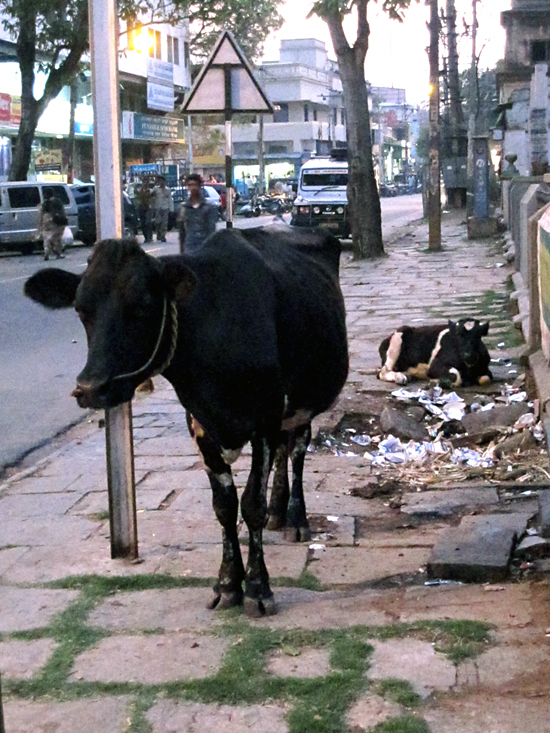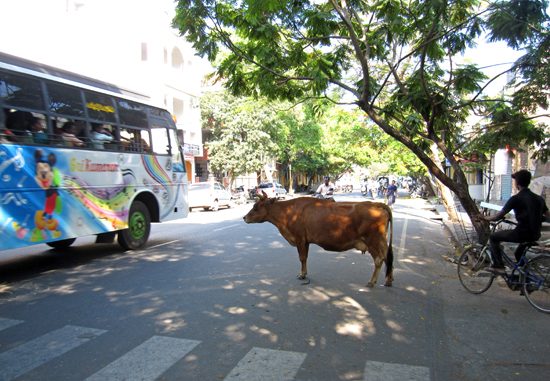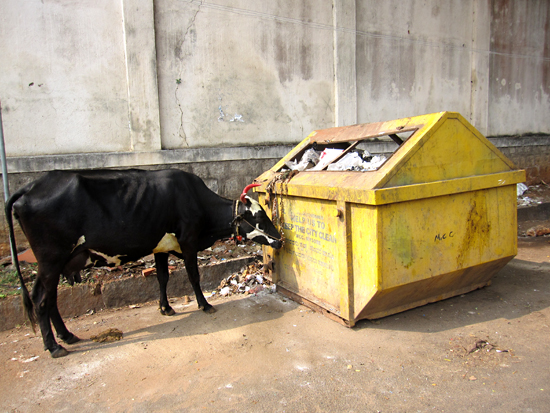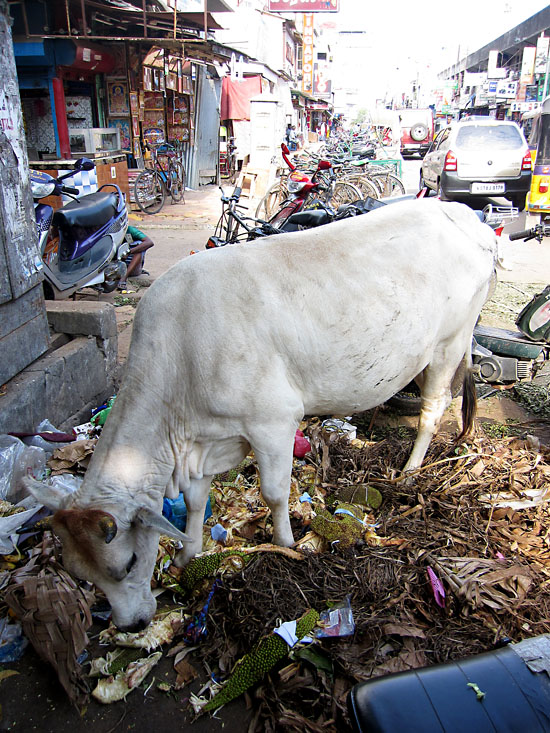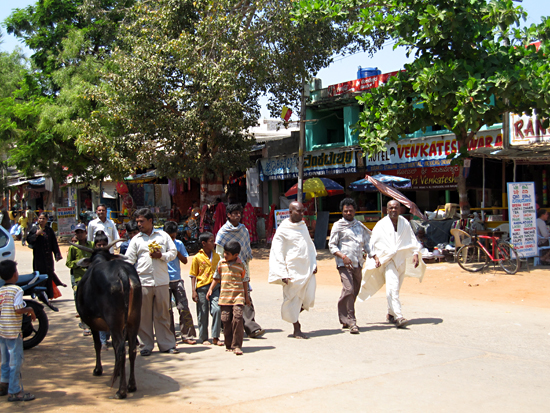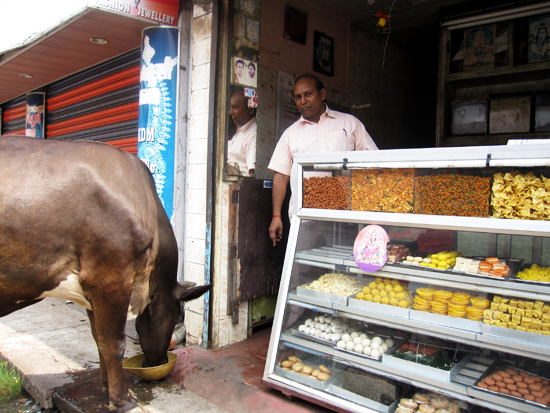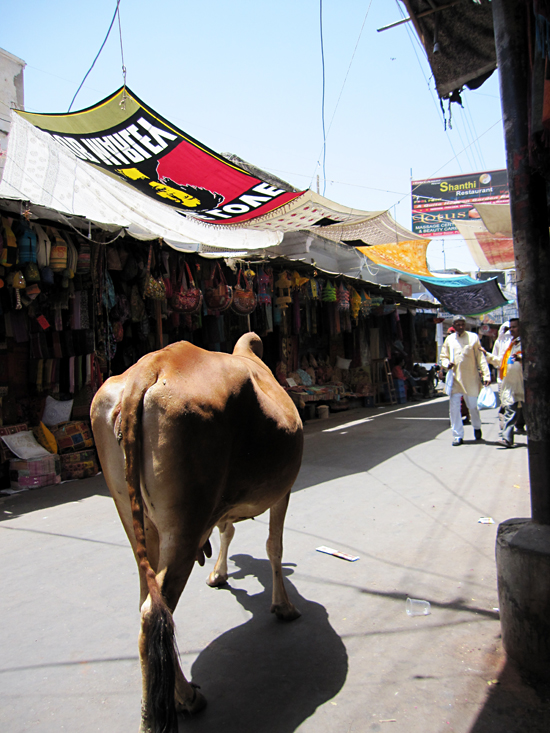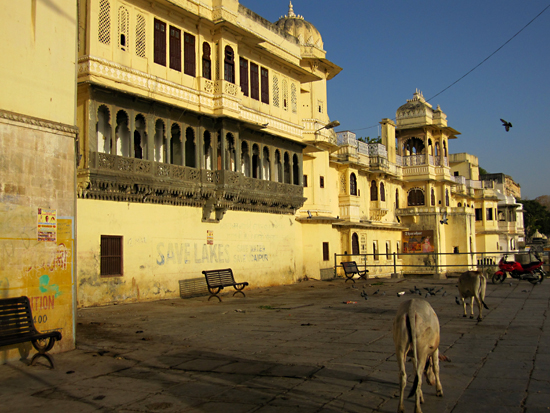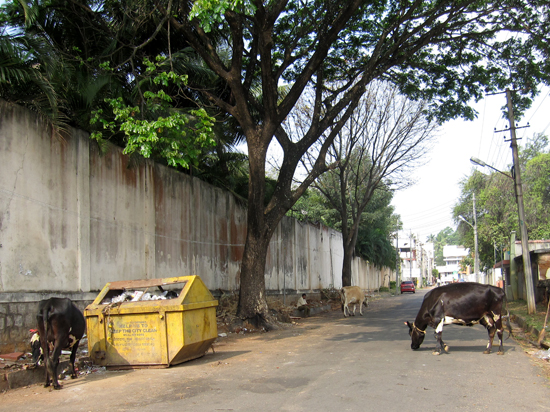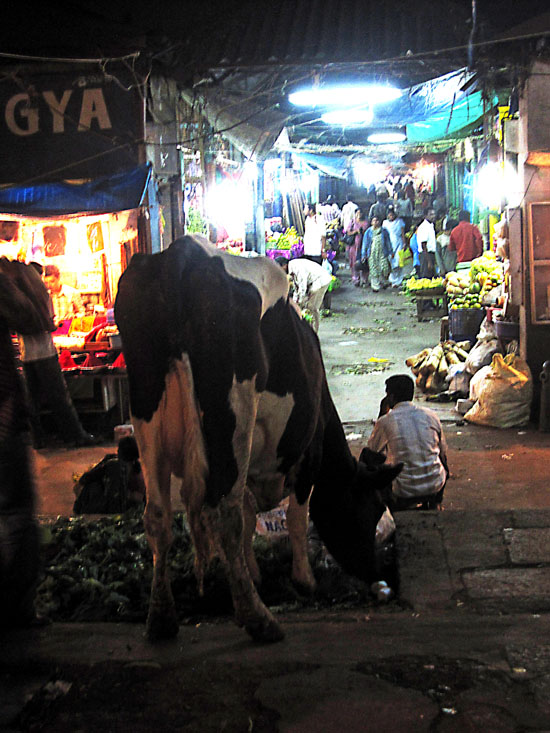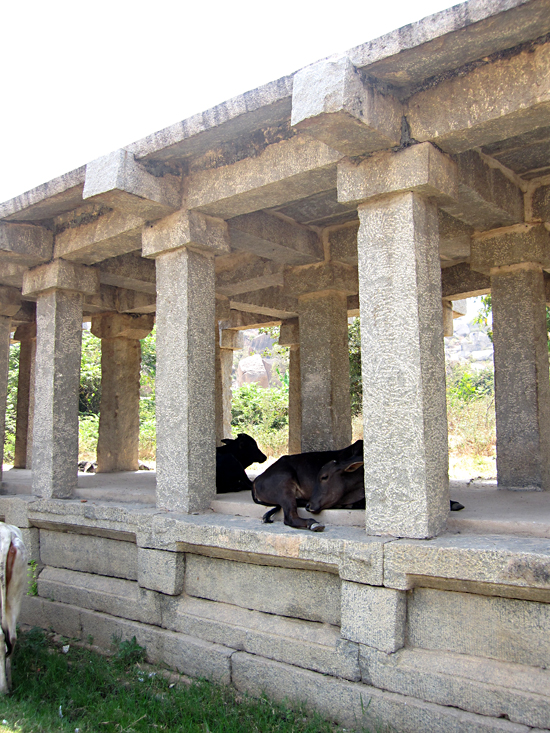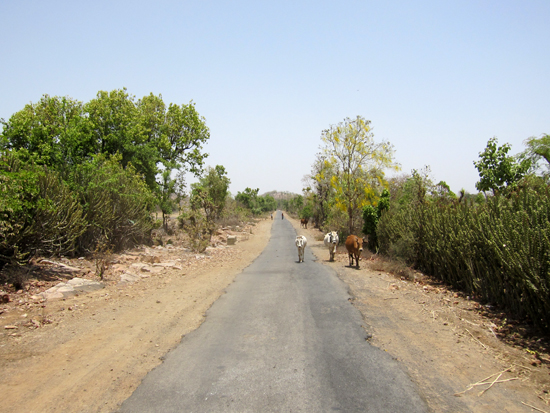It is such an ingrained stereotype that when I came to India I did not bat an eyelid when I saw random cows in random places eating random things. The holy cow is a well known Indian quirk, but the thing that did surprise me was the general lack of regard for the cows.
India apparently has 30% of the world’s cow population (says who? I don’t know, I read it somewhere. It sounds about right). In Delhi it is estimated that living alongside the 14 million residents are 30,000 cows (says who? This person, in a rather interesting read about cows in India)
It turns out it’s a lot more complex and cows are not holy at all, they are not worshiped, but they are recognised as sacred for a number of reasons. Firstly, the cow has historically served so many purposes for an Indian family. The milk provides nourishment, the dung provides energy fuel for devices around the home, they can work on the land, they are used in holy rituals and their docile gentle nature means they become loved like a pet. They are respected because they give so much but require so little in return.
Secondly, cows pop up quite a bit in Hindu spiritual texts, for example Lord Krishna was a cow herd, so this association has earned them some respect as well. This respect means that the 828 million Hindus in India won’t hurt, kill or eat a cow, the Jains won’t either.
Unfortunately respect (and not being eaten) is one thing, looked after and cared for is another. Respect doesn’t put food in the trough, or a roof overhead or large clean open fields to graze. It means no-one will interfere if one decides to sit down in the middle of the road.
Or takes a stroll down the road.
Or just stands wherever.
Or decides to munch on a plastic bag while standing on a railway track.
And if one wants to eat from a rubbish bin then it jolly well can.
Respect means a cow can do what it wants and no-one will get mad, or impatient, or violent with it…. but they probably wouldn’t go out of their way to help it either.
Well, that’s not true, some people are trying to help the cows. The same article above mentions a state effort, funded mostly by NGOs, to catch city cows and relocate them outside of the city limits. According to some research I did that has had some success though it has been slow to be properly rolled out, and action seems to be taken only when traffic accidents trigger pressure from the community. It would certainly take a big effort – how many cows is 30% of the world’s cow population? A lot.
This guy is also happy to help a cow, he’s not a cow-relocater, he’s just feeding a cow a banana with his kids which I thought was nice (I did wonder if cows are allowed to eat bananas but then I remembered the plastic and figure that question is moot).
And this guy gave a cow water because it looked thirsty.
I guess being kind to a cow is part of the general idea of sacred cows but I only saw it occasionally.
Mostly the cows just live their lives amongst the people with low interference.
So this was a post about cows, a place to put all the cow photos I took in India, some because they made me smile, some because they made my heart break.
Bless the holy cows.
Latest posts by Donna (see all)
- Kosciuszko Full Moon Adventure - April 29, 2018
- Camping Getaway at Chichester State Park - September 2, 2017
- Moutain Bike Riding Down Mt Lofty - January 27, 2017
